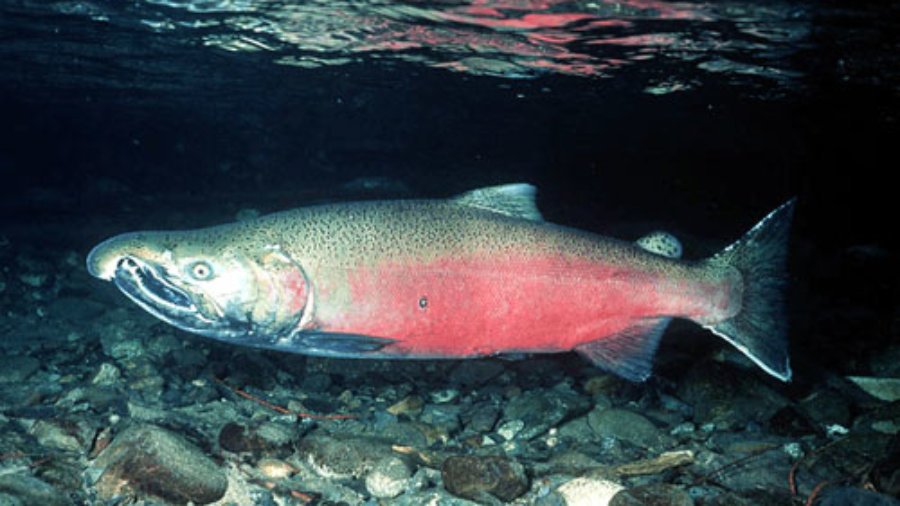Many Siskiyou Land Conservancy readers have already seen the recent article in the San Francisco Chronicle on the dire dry condition of the Scott and Shasta Rivers.
The article is very thoughtful and hits on most of the key points. Among them is the fact that some ranchers and farmers have become important allies in efforts to protect fish passage. What is lacking on that front, however, is a comprehensive effort by the agricultural community to return water to these critically important salmonid spawning rivers when it is most needed.
For instance, here is the Chronicle’s image of yours truly walking the dry Scott River:

Greg King, President of the Siskyou Land Conservancy, which has fought to protect the Salmon runs on the Klamath River, walks with his dog Wilder in a dry riverbed along the Scott River, a major tributary to the Klamath, on Wednesday September 2, 2009, in Fort Jones, Calif. Photo by Michael Macor/The Chronicle
Pretty bleak. Yet not 500 feet away is an irrigation ditch, which parallels the Scott River throughout the Scott Valley. On the day the above image was taken the irrigation ditch was full of water, and sprinklers throughout the Scott Valley were running full tilt, despite the 90+ degree evaporative heat. Here is my shot of the nearby irrigation ditch on Sep. 2. Note the pump and the lime-green fields:

So there’s the water. The fish have first rights to it but they are not getting it. Extinction is just around the corner, yet it’s entirely preventable. What sort of society would allow this to occur?
Today the Scott and Shasta Rivers are at their lowest levels in recorded history. Because the Scott River, in particular, provides key refugia for Coho salmon — which are protected by both the state and federal Endangered Species Acts —
the water diversions and irrigation in the Scott and Shasta valleys represent a “take” of protected endangered species and should be halted by the California Department of Fish and Game and the federal National Marine Fisheries Service. The water should be returned to the river.
The California Department of Fish and Game is overseeing efforts to create an “Incidental Take Permit” (ITP) that will allow farmers and ranchers to legally kill protected Coho salmon. For the first time, Fish and Game is allowing the agricultural communities themselves, in the form of the Scott and Shasta Resource Conservation Districts, to create the ITP, which is due out any day now.
According to Klamath Riverkeeper: “The currently proposed one-size-fits-all Incidental Take Permit system does not acknowledge the role of low flows in killing endangered species on the Scott and Shasta, and does not work toward restoring fisheries as the Endangered Species Act is intended to do in this context. Individual landowners must be held responsible for coho “take” due to de-watering.
Perhaps a call from you to Fish and Game is in order:
Steve Turek, F&G Aquatic Supervisor: 530-225-2280
Letters to the governator, your elected representatives and newspapers also help.
Finally, you can help protect salmon fisheries by contributing to one or several of the many excellent organizations working to protect them. On that note, you can contribute to Siskiyou Land Conservancy at:
P.O. Box 4209
Arcata, CA 95518
We take checks and credit cards. Contributions are tax-deductible.
Thanks,
Greg King
President/Program Director


